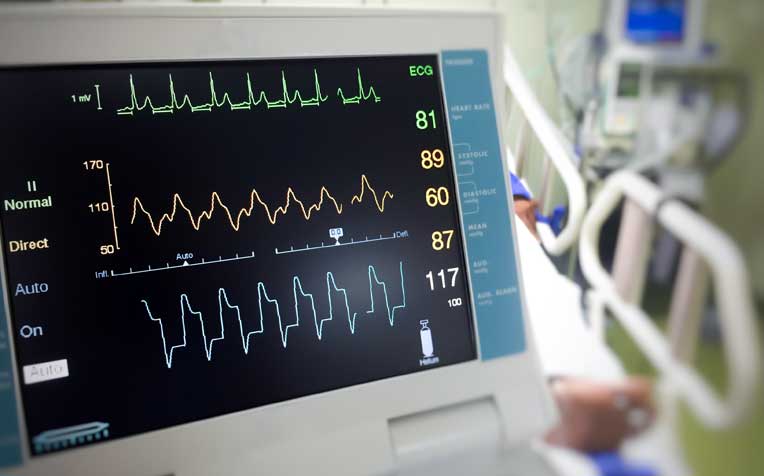
Electrocardiogram (ECG) records a heart's electrical activity.
Cardiac examinations - why are they necessary?
Heart disease is the third most common cause of death and hospitalisation in Singapore. Between 1994 and 2012, specialist outpatient visits for cardiology and cardiothoracic surgery across Singapore’s public institutions rose from 74,000 to 271,000. At the National Heart Centre Singapore (NHCS) alone, outpatient visits almost tripled, from 42,000 to 113,000.
Singapore’s ageing population means that demand for these services will grow even more ‒ the number of people aged 65 years and above is expected to triple to 900,000 by 2030. The recent spate of sudden cardiac deaths among young people indicates that even more caution is needed.
There are many tests to diagnose heart problems, and a patient’s symptoms and family medical history will be considered before a doctor orders them. However, there are cases when heart conditions do not produce specific symptoms or signs that are detectable by current tests, said Dr Ewe See Hooi, Senior Consultant, Department of Cardiology, National Heart Centre Singapore (NHCS), a member of the SingHealth group.
Four common cardiac tests for heart problems:
Electrocardiogram (ECG)
This is the first test used to check if someone has heart disease. An ECG records a heart’s electrical activity, and an abnormal result may be an early sign of an abnormal heart rhythm, heart blockage, damage or changes to the heart muscle, or enlarged heart chambers.
When is it done
- Before surgery.
- If the patient has chest pain or an abnormal heart beat.
- If the patient has a history of heart problems.
Procedure
Electrodes are placed on the chest, arms and legs. The ECG machine detects the electrical impulses which cause the heart to contract and relax, and transforms them into waves that are displayed on a monitor or graph. The test detects heart rate, damage to the heart, and the size and position of the heart’s chambers.
Pros and cons
An ECG presents no risks, but some heart conditions may go undetected as they never produce any specific ECG changes.
Exercise stress test
If the ECG detects abnormalities, this is the next step ‒ assessing how the heart responds to an increased workload during exercise. While the patient exercises on the treadmill, his heart’s electrical activity, heart rate and heart rhythm, as well as his blood pressure are continuously monitored.
When is it done
- If the patient has chest pain.
- If the patient has had a previous heart attack, angioplasty or bypass surgery.
- If the patient has an abnormal heart rhythm, or to monitor his heart rate and heart rhythm during exercise.
- As a screening test before starting an exercise programme or going for surgery.
Sticky electrodes are placed on a patient’s chest, and a blood pressure cuff around his arm. This is to take his blood pressure and an ECG of his heart at rest. The patient starts walking on the treadmill, and the speed and gradient are increased every three minutes for about 20 minutes. At the end of the test, the patient rests on a bed while his blood pressure and ECG are monitored.
Pros and consIt can detect abnormal heart rhythms during exercise, and reduced blood supply to the heart due to blockages in the arteries. It does not reveal the extent of the reduced blood supply, or the specific area in the heart that is not receiving enough blood. It may not detect arterial wall thickening, as this condition does not always lead to a reduction of blood flow to the heart. The test is not suitable for patients who are unable to perform treadmill exercises.
Ref: S13
Contributed by


















 Get it on Google Play
Get it on Google Play